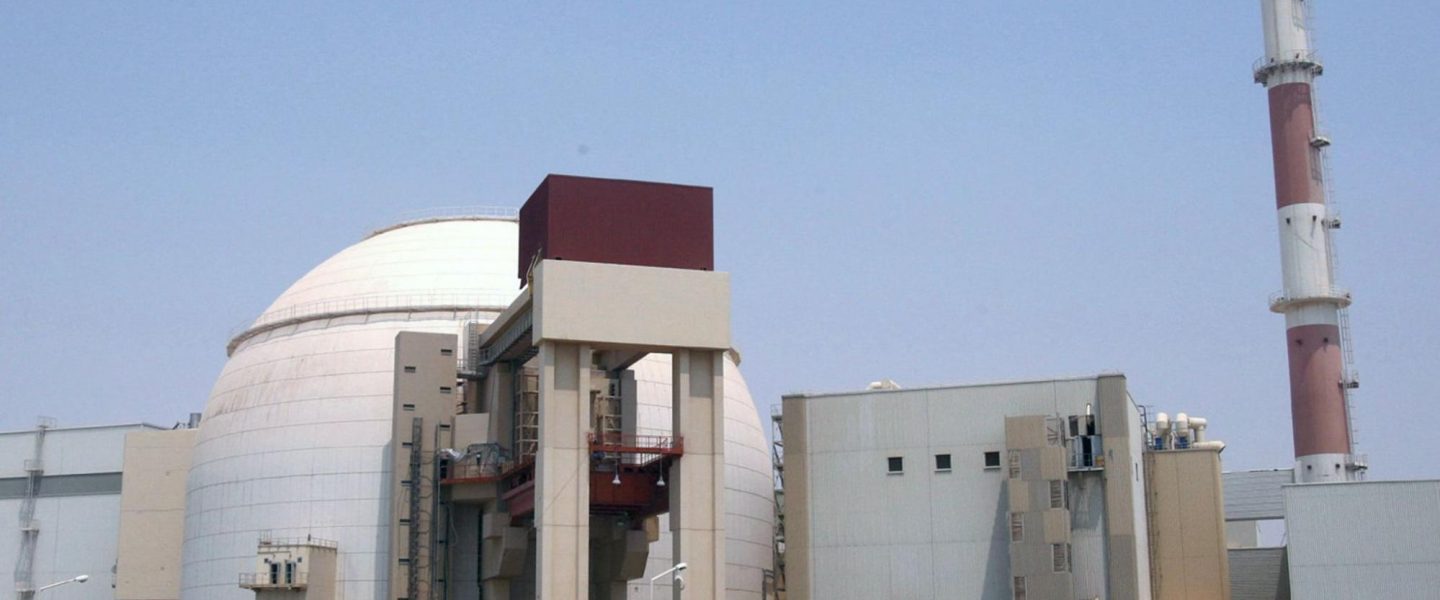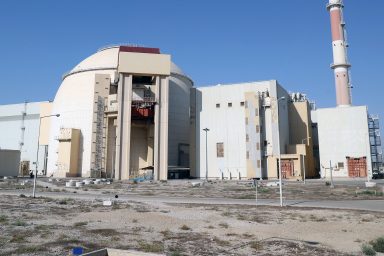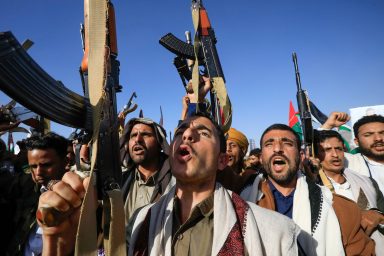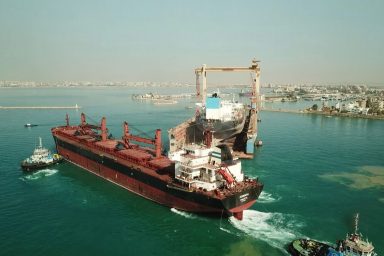After months of painstaking negotiations, a revival of the Iran nuclear deal appears within reach. It is also on the verge of complete collapse.
The fate of a revived Iran nuclear deal is at a critical moment.
After 10 months of painstaking negotiations that at times appeared close to collapsing, an agreement is within reach — that is, if the US and Iran can at last compromise on longstanding disagreements over sanctions relief and each country’s commitment to the deal and its terms.
On Tuesday, parties to the 2015 nuclear deal, formally known as the Joint Comprehensive Plan of Action (JCPOA), reconvened in Vienna following a week-long pause in which delegates returned to their capitals for consultations.
“Negotiations seem to be at the final stage, which requires determination and energetic efforts from all participants to get to the destination point,” Russian diplomat Mikhail Ulyanov tweeted Monday. China, France, Germany, and the UK were also part of the original agreement and have helped act as intermediaries as Iran has refused to meet directly with the US since the Trump administration backed out of the deal and expanded sanctions.
Ulyanov’s comments echoed those made by Iran and the US, as well as by the European Union coordinator of the talks, Enrique Mora, who tweeted on January 28 that “political decisions” needed to be made.
Where Things Stand
Over the past few months, Western officials have repeatedly warned that time is running out to restore the agreement. They point to significant advances made by Iran in its nuclear program, which have brought it far beyond the limitations set by the deal and close to being able to produce fissile material needed for a nuclear bomb.
Tehran began violating the restrictions imposed by the JCPOA a year after then-President Donald Trump withdrew from the agreement in May 2018 and reimposed harsh sanctions in a bid to force Iran to negotiate a new deal.
Announcement from the Trump White House of US withdrawal from the JCPOA:
More than two years later, Western officials warn that Tehran is only a stone’s throw away from reaching the capability to produce a nuclear weapon. While Iran has publicly stated it does not intend to produce one, Western officials are concerned that further progress will erode the nonproliferation components of the JCPOA.
“What the Americans and the Europeans have said is that we’re getting into a make-or-break moment,” said Naysan Rafati, the senior Iran analyst at the International Crisis Group. “If there is a deal, and Iran is serious in their view, then something can be reached. But if not, then the existing framework, notwithstanding the progress that’s been made so far, basically no longer applies, because of where Iran’s nuclear program is, and how difficult it becomes to account for those advances in the framework of the existing agreement.”
The JCPOA was originally intended to ensure that Iran’s nuclear program remained civilian in nature. In return for abiding by restrictions, Western sanctions on Iran were to be lifted.
“The key benefit of the JCPOA is simply that it would allow the international community to determine if Iran were pursuing a nuclear bomb with enough time to be able to come up with a diplomatic solution, thus saving the lives that would come with a potential military confrontation,” said Samuel Hickey, research analyst at the Center for Arms Control and Non-Proliferation.
On Monday, Mora seemed to raise concerns about Iran’s nuclear advances as he called for a “spirit of compromise” ahead of the resumption of the eighth round of negotiations.
“In view of different undesirable trends undermining the JCPOA, there is a need to swiftly conclude these negotiations,” he tweeted.
While worrying to Western officials — and neighboring Israel, which continues to push back against the JCPOA — many experts say that the advances have been an attempt by Iran to gain leverage in negotiations.
“It’s pretty clear that Iran’s activities in breach of the JCPOA were a direct response to the US withdrawal and the Trump administration’s maximum-pressure campaign,” said Julia Masterson, research associate at the Arms Control Association.

International Atomic Energy Agency Director General Rafael Mariano Grossi (right) with Ali Bagheri Kani (left), Iran’s vice minister of foreign affairs who is currently serving as Iran’s chief nuclear negotiator, during his official visit at the agency headquarters in Vienna on December 2, 2021. Photo credit: IAEA Imagebank / Flickr (CC BY 2.0)
Before it returns to the JCPOA, Iran is demanding that the US lift sanctions and guarantee that future administrations will not withdraw from the agreement as Trump did, something that isn’t politically feasible in Washington.
Meanwhile, Washington wants Iran to agree to roll back its nuclear advances to comply with the restrictions of the original agreement.
The ideal outcome, many Iran and regional experts say, is a combination of these demands: a return to the JCPOA in its original framework to substantially scale back advances in Tehran’s nuclear program and fully restore monitoring measures. This would ensure its compliance while the US lifts sanctions, opening up Iran to trade and economic growth.
“Looking at it from the outside, it’s kind of a coin toss on whether or not the decisions that are made in Tehran and DC, when they actually come back to capitals, get us over the finish line,” Rafati said Friday.
When it comes to sanctions relief, experts say that the US and Iran must agree on which sanctions would be lifted. The original deal lifted sanctions on oil and energy, finance, and trade related to Iran’s nuclear program. Those related to terrorism and human rights remained in place. Tehran is demanding that the US lift sanctions, especially those imposed by Trump that targeted every sector of the Iranian economy, not just specific individuals and groups accused of terrorism.
The US did restore waivers last week to allow foreign companies to conduct nonproliferation technical work at Iran’s nuclear sites. While Tehran welcomed the move, it noted that the waivers still fell short of its full demands.
“You can’t take away knowledge. You can take away technology, you can put it under lock and seal and international nuclear inspectors and oversight, but the knowledge that they have gained throughout this process, we can’t take back.” — Samuel Hickey, Center for Arms Control and Non-Proliferation
During a meeting with Finland’s foreign minister on Monday, Iranian President Ebrahim Raisi reportedly said that the “grounds for an agreement is ready if the sanctions are lifted.”
There was no mention of Iran’s other demand — a guarantee that a future US administration won’t withdraw from the agreement. The meeting came as Republican senators ratcheted up their own rhetoric in Washington, demanding that Congress be allowed to vote on a new deal or they would work to block it.
“If the Iranians maintain that line of demanding an ironclad political or legal assurance, that simply doesn’t exist,” said Rafati. “What does exist is what the Biden administration has said, which is that if we come back into the agreement, and if Iran is in compliance, the US will carry out its obligations under the JCPOA.”
The extent of Tehran’s nuclear advances raises difficulties in rolling back its program in line with the limitations set by the JCPOA, Iran experts note. While Iran can give up advanced centrifuges and stockpiles of highly enriched uranium, its nuclear scientists have acquired immensely valuable know-how.
“You can’t take away knowledge,” said Hickey. “You can take away technology, you can put it under lock and seal and international nuclear inspectors and oversight, but the knowledge that they have gained throughout this process, we can’t take back.”
Such knowledge also carries ramifications for Iran’s so-called breakout time — the amount of time it would take to produce a nuclear weapon.
“Under the JCPOA, that was 12 months. Now it’s a matter of weeks,” said Rafati. “And even if the deal is restored, we may not be able to get back to that 12-month period. We may have to end up with something that’s closer to a window of several months because of the knowledge accumulation that Iran has had while it’s been deploying advanced centrifuges and building out its nuclear program since 2019.”

Map of the main sites of Iran’s nuclear program in 2012. Photo credit: Yagasi / Wikimedia (CC BY-SA 4.0)
What Happens If Talks Collapse?
In the final months of 2021, concerns about Iran’s intentions and the possibility that negotiations would collapse prompted discussions and headlines about the possibility of military action against Iranian nuclear sites.
While President Joe Biden is keen on a diplomatic resolution, his administration has not explicitly ruled out military force to prevent Iran from acquiring a nuclear weapon, a move that would likely prompt a nuclear crisis that risks anything from a regional arms race to a bloody conflict.
Israel appeared to flirt with the possibility late last year, even as former officials and experts warned that the country’s military is unprepared for such action and the expected multifront retaliation it would provoke.
Complicating the military option further is that Iran’s nuclear program is widely dispersed. Many of its facilities are also underground, which offers those sites a natural barrier from air and missile attacks.
“It’s clear at this moment that no one is willing to escalate something to the point of possibly causing a war,” said Hickey. “The scenarios for how all of that would break down are really quite worrisome, but no war would be contained to the perimeters of Iran. It would have terrible consequences for many of the countries [in the region] including Israel, Saudi Arabia, the United Arab Emirates, Bahrain, Iraq, Syria, and Lebanon. It would spread out throughout the entirety of the region. It’s not clear that anybody really wants to light that tinderbox.”
Just as Iran has appeared to use its nuclear advantages for leverage, some experts have suggested that hawkish comments by Western and Israeli officials may also have been intended for diplomatic fodder.
“This is all part of the tactics of negotiating,” said Alex Vatanka, director of the Iran Program at the Washington-based Middle East Institute, last month.
“When you put all of the noise and smoke away, what you’re faced with is the fact that neither America and the West nor the Iranians actually have a Plan B,” he continued. “Diplomacy is the best approach to solving this issue for both sides. That’s why while we can expect this diplomatic tract to be slow, contentious, a lot of threats being thrown around by all sides, the reality is there is no Plan B and there is no military option that would be satisfying to the United States or Israel.”
If anything, experts say, military action against Iran by Israel and the US in recent years seemed to only strengthen Tehran’s resolve.

Qasem Soleimani (left). Mohsen Fakhrizadeh (right). Photo credit: Unknown / Wikimedia (CC BY 4.0) and Tasnim News Agency / Wikimedia (CC BY 4.0).
In the years that followed the US withdrawal from the JCPOA, tensions deepened between Washington and Tehran under Trump’s so-called maximum pressure campaign of sanctions. Events like the US drone strike on one of Iran’s top generals, Qasem Soleimani, at the start of 2020 brought relations even lower. Meanwhile, covert operations by Israel, such as its assassination of Iran’s top nuclear scientist, Mohsen Fakhrizadeh, in November 2020 and the alleged sabotage of an Iranian nuclear facility last summer, appeared to embolden Iran’s determination to develop its nuclear program.
“This is driving the program underground, and that’s really not the optimal solution,” said Hickey. “The optimal solution is to keep it in the open as much as possible … to keep an eye on exactly what is happening so we don’t lose sight of anything,” he added. “As long as we have a comprehensive picture of what is happening in Iran’s nuclear program, we can be confident that they’re not pursuing a nuclear weapon. As things are driven deeper and deeper underground, that makes it very difficult for us to be confident in what is happening. That’s a recipe for disaster.”
In addition to driving Iran’s nuclear activities out of sight, military action also appears to have increased support for hardliners and their policies. After the death of Fakhrizadeh, Iran’s parliament passed legislation ordering the country’s atomic agency to advance the nuclear program even further by enriching uranium to greater percentages, installing advanced centrifuges, and increasing its stockpiles of highly enriched uranium. It also led to international inspectors being barred from monitoring Iran’s nuclear activities
“We can see a lot of Iran’s advances over the last year are a direct result of that law, which is tied to leverage for sanctions relief,” said Masterson. “Whether or not that tactic was successful waits to be seen.”
The failure of previous military actions emphasizes the need for a diplomatic solution, experts say.
“The diplomatic track will be a difficult one, was always going to be a difficult one, because that’s the history of this Iranian nuclear program, but that doesn’t mean the slow, painful path of diplomacy doesn’t exist,” Vatanka said. “It does, and that’s where we are right now.”



